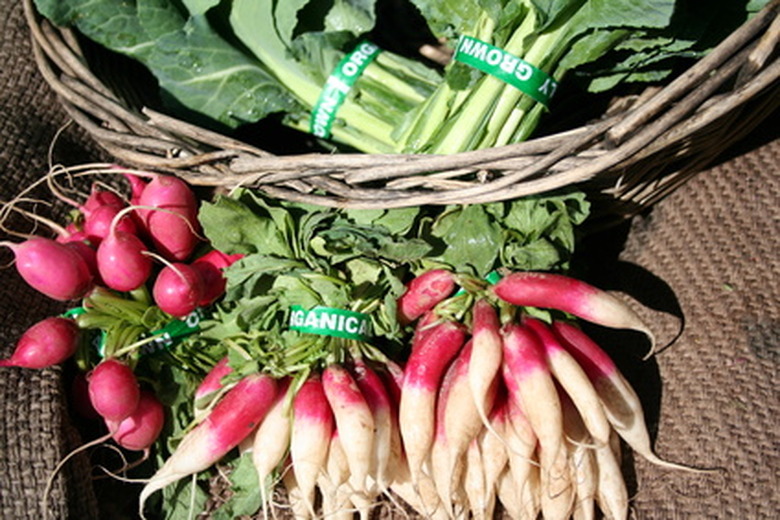What Types Of Soil Do Radishes Like?
Radishes of all types are a spicy, crunchy early season root vegetable that rewards you with a harvest within the first month after you plant seeds. They can provide a good introduction to gardening for children because the results happen so quickly. It's wise to prepare your soil during winter to make sure it is well drained, full of organic materials, free of rocks and that it has a slightly acidic pH reading.
Loamy Soil
Radishes will grow best and develop large, succulent roots if you amend their soil with any type of compost, which makes clay or sandy soils more loamy. A balanced plant food can help the soil if you add it before you plant to give radish sprouts the nutrition they need.
Well-Drained Soil
Radishes can develop rotted roots if their soil is constantly wet. On the other hand, they need sufficient moisture to make them grow into plump roots with a good flavor. To improve soil drainage, add sand and compost before planting radishes. Other organic materials, such as fallen leaves, perlite or vermiculite also help soil drainage.
- Radishes of all types are a spicy, crunchy early season root vegetable that rewards you with a harvest within the first month after you plant seeds.
- A balanced plant food can help the soil if you add it before you plant to give radish sprouts the nutrition they need.
Slightly Acidic Soil
Radishes grow best in soil that has a slightly acidic pH reading around 6.5. Testing your soil before planting radishes is wise. Hydrated lime helps to raise soil pH and sulfur helps to lower it. Soil pH does not change immediately, so plan ahead by digging the appropriate material into the soil where you plan to grow radishes at least six weeks before planting seeds.
Non-Rocky Soil
Radishes that must grow in rocky soil will often develop as misshapen little globes that have craters and holes where they were forced to grow around rocks of various sizes. A fine wire mesh screen is useful for sifting rocks out of soil when you are preparing your planting area.
